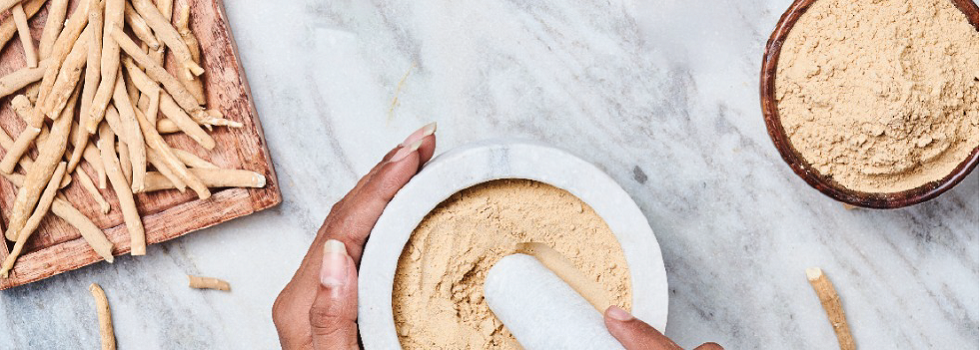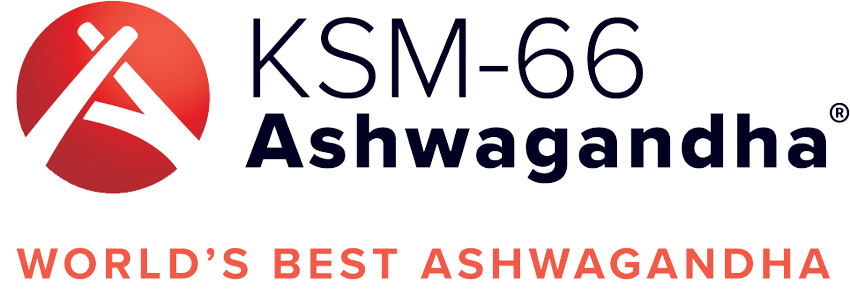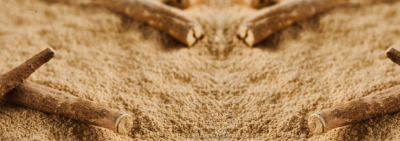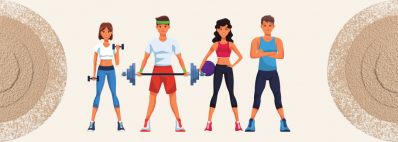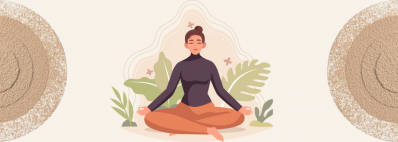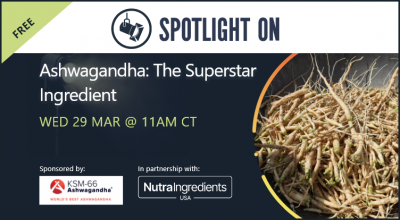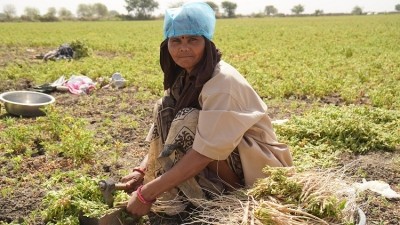Promotional Features
6 Tips to Select the Best Ashwagandha
Of the top 5 dietary supplements (rated by growth) – Ashwagandha is the only herb, and it clocked in at 67% growth rate -- according to recent data from ClearCut Analytics’ Insights Portal.
Make no mistake – Ashwagandha is a globally sought-after herb by consumers who want to stay healthy and improve well-being. Ashwagandha is the most revered botanical in Ayurveda, where it is also referred to as the Prince of Herbs because of its impressively broad range of therapeutic benefits. In Ayurveda, Ashwagandha exemplifies the very essence of the prophylactic and restorative approach to health.
With a sharp uptick in the demand for Ashwagandha, there is an increased demand for superior-quality, sustainable Ashwagandha extract. Selecting the best “Ashwagandha” ingredient may seem like an onerous process. But the right selection can deliver a consistent, quality ingredient for formulators and manufacturers incorporating the herb into their finished products. It is generally understood that the safety and quality of the final product is ultimately dependent on not only the ingredients themselves but also on the best practices of the supplier.
So, how do you make this decision? How do you select the best supplier? There are 6 key considerations that will help you make your choice of Ashwagandha supplier easy and stress-free.
1. Make sure your Ashwagandha is a root-only extract.
There are some Ashwagandha suppliers that make the extract using the plant’s leaves instead of just the root. Thousands of years of traditional use focuses on the use of Ashwagandha’s root. Various Ayurvedic textbooks, as well as standard references including the Indian, British, and United States Pharmacopoeias as well as and various globally accredited monographs like WHO and Health Canada, all recommend the usage of roots and not the aerial parts of the Ashwagandha plant.
The Government of India and Ministry of Ayurveda officially suggest the usage of just the roots of the Ashwagandha plant. Further, newer credible human clinical studies (by independent researchers and universities) showing safety and efficacy of Ashwagandha have used the root, cementing and clarifying its health-promoting value. Regulatory protocols like EFSA, European Medicine Agency and several other countries are inclined towards the usage of Ashwagandha roots and not the leaves.
2. Make sure that your Ashwagandha extract is scientifically validated.
Consumers today seek clarity and evidence for an extract’s therapeutic benefits that can substantiate the traditional claims. Modern science and research corroborate these traditional health benefits and have unearthed the mechanisms of action. When looking at an Ashwagandha extract, consumers want to know if the research has been conducted on this actual ingredient and were the results presented in a transparent way.
It is also important that the clinical studies have followed the gold standard of substantiation: randomized, double-blind, placebo-controlled human clinical trials that have been conducted in healthy population by well-established experts or researchers and the research has been published in PubMed indexed high impact factor journals.
3. Make sure that your ashwagandha supplier is vertically integrated.
Ashwagandha’s demand has grown consistently in the last few years resulting from consumer awareness about the herb. The demand continues to grow, thereby creating a huge pressure on the supply-chain. Experts do predict that going forward the gap between demand and supply will further increase the price of the raw material multi-fold. To cut the corners, many manufacturers will covertly adulterate root extracts by mixing in the inferior and cheaper leaf material. Hence, it is very important that you work with an Ashwagandha supplier who owns and controls the entire supply chain – right from the farms, to the state-of the art manufacturing units to distribution. Consumers seek traceability with brands that provide full visibility into their supply chains and can document the ingredient from seed to shelf.
4. Make sure that your ashwagandha is extracted without using alcohol or any chemicals and solvents.
The process of extraction sometimes requires the use of harsh chemicals, alcohol and solvents, traces of which are difficult to remove completely from the final product. Usage of alcohol also most often restricts the Ashwagandha ingredient from becoming certified Organic. Data shows that the demand for organic-certified ingredients continue to rise. Water-based or green extraction results in a cleaner extract with better organoleptic properties, enhanced solubility and a greener environment.
5. Make sure that the withanolide content in ashwagandha is optimum.
Withanolides are one of the bio-actives that are found in Ashwagandha. However, it is also important for the extract to be full spectrum. A "full-spectrum" extract is one that maintains the balance of the various constituents as found in the original herb, without over-representing any one constituent. Ashwagandha’s efficacy is believed to be derived from a complex blend of active constituents and all these constituents need to be present in their natural proportions, which is why it is critical for an Ashwagandha root extract to be full spectrum.
While choosing an Ashwagandha extract, always ensure that the withanolide content is not too high (e.g >25% by HPLC). This will make the extract more like a pharmaceutical, where the focus is mainly on one particular bioactive. Likewise, it is important to ensure that the withanolide content is not too low (<2.5% by HPLC). This will result in the dosage of the extract being too high.
Therefore, always choose an extract that has an optimum percentage of withanolides (between 3% and 5% by HPLC), so that all the other constituents that are important for the herb’s efficacy are also represented adequately.
6. Make sure that the Ashwagandha extract and the supplier are certified and verified by independent third-party certifications.
Quality certifications provide some assurance that a company is committed to best practices in its production, testing, and supply chain. Quality certifications can be validated as a tangible evidence of transparency. In other words, the more certifications, the more transparent your supplier’s quality control protocol is. Certifications are a measure of exhibiting compliance to strict and rigid specifications, and also give an insight into what a company values, and where it is investing.
The most important certification for nutraceutical industry are:
GMPs (Good Manufacturing Practices): Every year, numerous manufacturers are sent warning letters by the US FDA as they don’t comply to the GMP. Look for a supplier that holds various prestigious third-party GMP certifications, such as those from USP, NSF, UL-NPA and WHO.
FSMA-FSVP: If the finished product brand is using an ingredient that is being imported into the US, then the supplier needs to be certified and compliant with Foreign Supplier Verification Program (FSVP) under the Food Safety Modernization Act (FSMA).
Food Safety: With heightened awareness stemming from recent high-profile food recalls, consumers are demanding an increase in food safety standards throughout the global supply chain. Those businesses that become certified to a particular food safety schematic will gain a competitive advantage in the marketplace. These certifications include SQF, BRC, FSSC, Non-GMO, Gluten Free, Kosher, Halal, and BSCG, among others.
Conclusion
Ixoreal Biomed and its signature ingredient, KSM-66® Ashwagandha root extract, fulfill all of the 6 points.
- Adhering to the traditional practice of Ayurveda, Ixoreal Biomed spent years developing KSM-66 Ashwagandha, exemplifying the basic principles of using root only to develop a safe and efficacious product. KSM-66 Ashwagandha is a full-spectrum, root-only extract that maintains the critical balance of various constituents as in the original herb and without over-representing any one constituent.
- Ixoreal Biomed has the most extensive set of clinical research on its KSM-66 Ashwagandha Root Extract with 24 studies: 17 published studies, 3 additional studies completed and in peer review, and 4 currently ongoing studies. These clinical studies follow the gold standard of substantiation: randomized, double-blind, placebo-controlled designs.
- Ixoreal Biomed has its own farms, as well as state-of-the-art production facilities, testing laboratories, research center and distribution facility, thus allowing for full control of the vertically integrated supply chain and thus provides outstanding transparency from seed to delivery.
- The extraction of KSM-66 is based on the 12 principles of Green Chemistry, wherein no alcohol or any chemical solvents are used.
- KSM-66 is standardized to a withanolide content of >5% by HPLC. The unique extraction process of KSM-66 does not disturb the delicate balance of the constituents found in the raw herb. It not only retains all the constituents thereby making it a full-spectrum extract, but also ensures optimum withanolide content for a lower dosage.
- Ixoreal Biomed has earned 38 distinct quality certifications, that when combined, represent a globally peerless Ashwagandha ingredient. Ixoreal’s quality control begins at the ingredient supply level.
